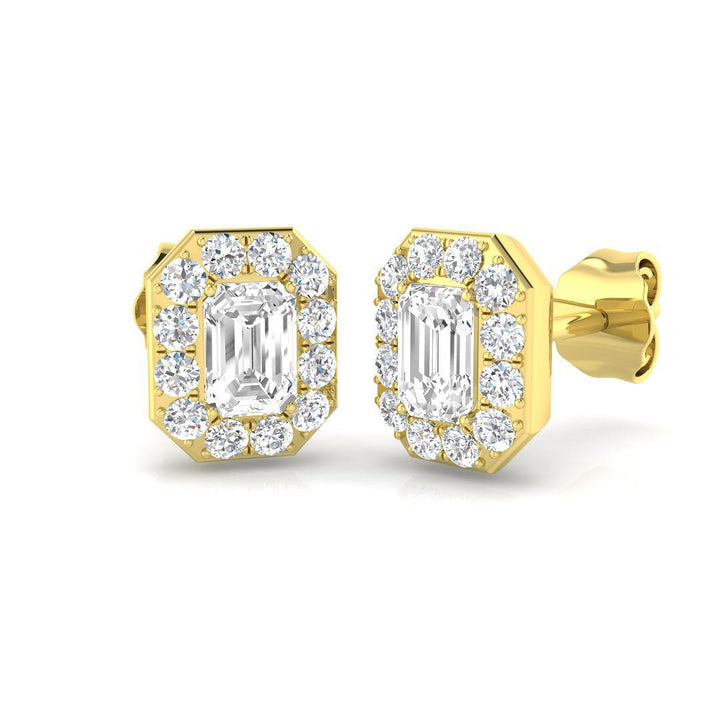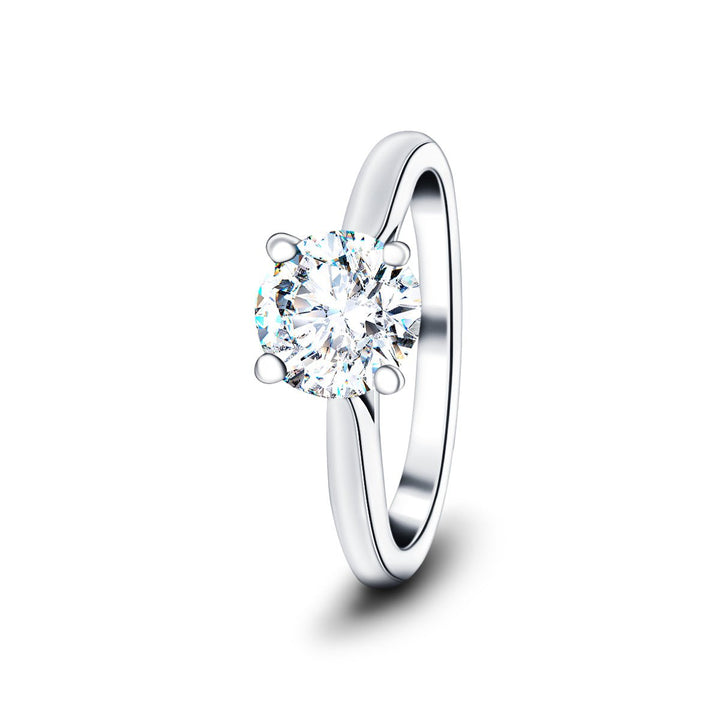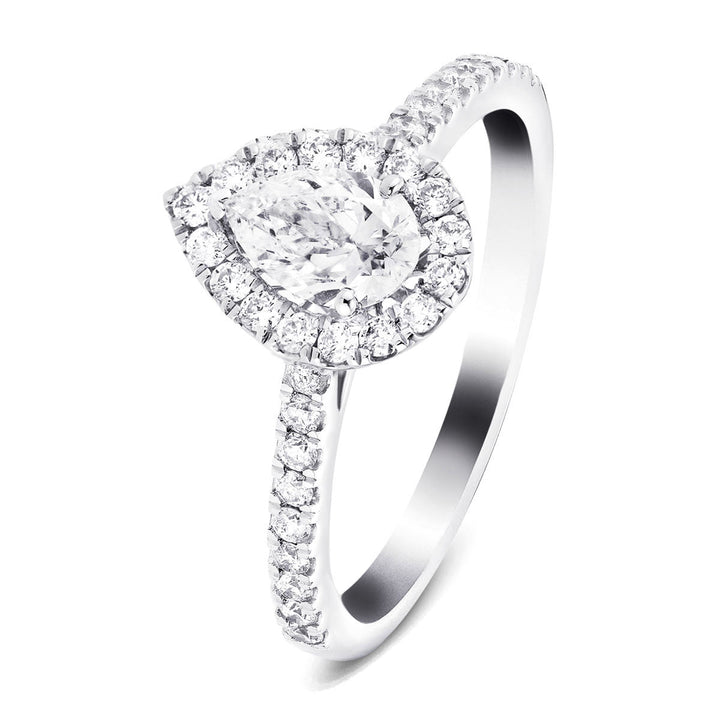| Quick Answer |
| Shiphra, the biggest lab-grown diamond ever created, at 50.25 carats, highlights the advancements in synthetic diamond technology and the potential for sustainable luxury in the jewellery industry. Its creation using the Chemical Vapor Deposition technique showcases how technology is pushing the boundaries of diamond size and quality. |
The biggest lab-grown diamond to date is an impressive 50.25-carat gem known as Shiphra, displaying G colour and VS2 clarity. This milestone reflects the height of innovation within the synthetic diamond industry, combining exceptional size with superb craftsmanship. Utilizing the Chemical Vapor Deposition (CVD) technique, which emulates the natural conditions of diamond formation, this gem underscores a significant shift towards ethical and sustainable luxury.
Additionally, Shiphra's emerald cut exemplifies remarkable symmetry and polish, setting a new benchmark in lab-grown diamond creation. The crafting of such a gem signifies advancing technology and hints at the potential transformation awaiting the diamond industry, promising intriguing developments ahead.
Unveiling the Shiphra Diamond
The introduction of Shiphra, a record-breaking 50.25-carat lab-grown diamond, heralds a new era in the diamond industry, showcasing the pinnacle of innovation and craftsmanship.
The diamond, an emerald-cut stone, measures 22.95 x 18.45 x 11.57 mm in its cut form. It was, of course, larger in its rough form, before it was cut and polished.
With its exceptional size, G colour, and VS2 clarity, this ethereal diamond sets a new standard for what is achievable in lab-grown gemstones. Beyond its size, Shiphra's unique features include an emerald-cut that highlights its exquisite symmetry and polish, qualities that have earned it excellent grades from the International Gemological Institute (IGI).
£535.00
Discover the exquisite elegance of our Lab Diamond Emerald Halo Earrings, boasting a total diamond weight of 1.00ct with a D/VVS quality, set in luxurious 9k yellow gold. These earrings feature a mesmerising emerald-cut central diamond encircled by sparkling round… read moreLab Diamond Emerald Halo Earrings 1.00ct D/VVS in 9k Yellow Gold

£1,195.00
Industry impact is undeniable, as Shiphra challenges traditional perceptions of lab-grown diamonds, demonstrating that they, too, can reach monumental sizes and beauty. Expert opinions converge on the significance of this achievement, praising the advanced technology and precision that made Shiphra possible. This milestone is expected to significantly influence market potential as consumer preferences increasingly lean towards sustainable and ethically sourced options without compromising quality or size.
Indeed, Shiphra embodies a remarkable feat of technological advancement and signals a shift in consumer demand towards lab-grown diamonds that offer both freedom of choice and peace of mind. The introduction of Shiphra at JCK Las Vegas positions it as a harbinger of change, promising a future where beauty and ethics coalesce seamlessly in the diamond industry.
How The Biggest Lab-Grown Diamond Was Created
Utilizing the chemical vapour deposition (CVD) method, the creation of Shiphra represents a cutting-edge approach to synthesizing diamonds, mirroring the conditions under which natural diamonds form. This method involves precise growth conditions and rigorous quality control to guarantee the diamond's purity and clarity. The diamond-cutting process employed precision tools, reflecting Surat's renowned craftsmanship in diamond polishing, which was vital in achieving Shiphra's exceptional symmetry and polish.
The diamond's eight-month journey from a chemical vapour to a polished gemstone was meticulously guided by Ethereal Green Diamond LLP's 40 years of expertise in the deposition process, ensuring that each step, from the initial growth phase to the final polishing, adhered to the highest standards. This process underscores the technological advancements in creating lab-grown diamonds. Shiphra's IGI certification serves as evidence of the significant industry impact.
After its creation, the diamond was purchased by the Swiss company, Shiphra Jewelry who gave the diamond its name.
|
Aspect |
Description |
|
Growth Conditions |
Tailored to mimic natural formation, ensuring top-notch quality. |
|
Diamond Cutting |
Utilized precision tools for exquisite craftsmanship. |
|
Deposition Process |
Controlled chemical vapour environment for diamond formation. |
|
Surat Craftsmanship |
Expert diamond polishing contributes to the diamond's brilliance. |
|
IGI Certification |
Marks a milestone in recognizing lab-grown diamonds' quality and impact. |
This table emphasizes the intricate balance between technology and tradition in crafting a diamond that embodies freedom and innovation.
£9,495.00
Experience the ultimate in luxury with this Ella Lab Diamond Solitaire Engagement Ring, featuring a 4.00ct D/VVS-graded lab-created diamond set in platinum. UK designed with an IGI-certified brilliant round diamond and a lifetime workmanship guarantee, this ring is a true… read moreElla Lab Diamond Solitaire Engagement Ring 4.00ct D/VVS Platinum

£18,116.00
Size VS. Growth Time
The correlation between a gem's size and the time required for its growth in lab-grown diamonds presents an intriguing aspect of modern gemology. This relationship is vital in balancing market demand, industrial applications, and the ethical concerns of both the environmental impact and the burgeoning lab-grown diamond industry.
The growth techniques, such as High Pressure, High Temperature (HPHT) and Chemical Vapour Deposition (CVD), play a substantial role in this dynamic, each with its advantages and challenges.
1. Growth Techniques: HPHT and CVD can produce large diamonds. However, the time required can vary significantly, with larger diamonds necessitating more extended growth periods.
2. Market Demand: As market demand for both jewellery-grade and industrial diamonds increases, the need to efficiently scale up diamond size without excessively prolonging growth time becomes critical.
3. Industrial Applications: The scalability of diamond production to meet industrial needs without compromising on quality or ethical standards requires innovative growth techniques that balance size, growth time, and environmental impact.
Diamonds used in jewellery take from two weeks to several months to grow. A one-carat diamond might be expected to take something in excess of two weeks. So, the eight months that the Shiphra diamond took to create represent a significant investment in time and production skills. Of course, that's nothing compared to the billions of years it takes to create a natural diamond!
Understanding these dynamics is crucial for addressing the ethical issues and environmental impact related to lab-grown diamonds, ensuring a sustainable future for the industry that is in line with the freedom that modern society seeks.
The Advantages of Going Lab-Grown
Lab-grown diamonds' rise in popularity underscores a growing consumer preference for ethical and sustainable choices in the jewellery market. This shift is a trend and a movement towards more responsible consumption. With lab-grown diamonds, buyers enjoy 20-40% cost savings compared to their mined counterparts without compromising on quality. These diamonds mirror natural diamonds' physical, chemical, and optical properties, offering a guilt-free luxury.
The environmental benefits of lab-grown diamonds are significant. They eliminate the destructive impact of traditional diamond mining, preserving natural landscapes and ecosystems. Ethical sourcing further guarantees that the diamonds are conflict-free, addressing the moral concerns of diamond procurement. This aspect particularly appeals to those who prioritize integrity in their purchases.
Moreover, customization options abound with lab-grown diamonds. Consumers have the freedom to choose from a vast array of sizes, shapes, and colours, tailoring their jewellery to their precise preferences. This flexibility, coupled with the growing popularity of lab-grown diamonds, signals a paradigm shift in the jewellery industry towards more sustainable and personalised luxury. In embracing lab-grown diamonds, consumers are making a style statement and a commitment to ethical and environmental stewardship.
£1,530.00
Indulge in the modern elegance of the Lab Diamond Claw Set Bangle, boasting an impressive 4.00ct of D/VVS quality real diamonds. Each stone is meticulously held in a claw setting, showcasing the diamonds' radiant brilliance and clarity. Crafted with a… read moreLab Diamond Claw Set Bangle 4.00ct D/VVS in 925 Silver

£3,395.00
Future Possibilities for Lab-Grown Diamonds
The advent of technology in the lab-grown diamond industry heralds a promising future, with LaBrilliante aiming to pioneer the creation of rough diamonds that could weigh up to 200 or 300 carats. The possibilities this opens up for the market are vast, suggesting a landscape where consumers can own larger and more impactful diamonds without mined stones' ethical and environmental concerns. This vision is grounded in three key areas:
1. Potential Innovations: Technological advancements are expected to push the boundaries of what's possible in diamond creation, making the fabrication of even larger diamonds a feasible reality.
2. Market Impact: The availability of larger lab-grown diamonds has the potential to alter consumer trends significantly, with buyers increasingly leaning towards sustainable yet luxurious options.
3. Industry Competition: As companies like LaBrilliante lead the charge in manufacturing and technological improvements, the competition within the industry is set to intensify, driving further innovation and potentially lowering costs for consumers.
With these developments on the horizon, the future of lab-grown diamonds looks bright and boundless, offering consumers freedom of choice and new challenges and opportunities to the industry.
FAQs About the Biggest lab-Grown Diamond
Is There a Size Limit For lab-grown Diamonds?
There is no intrinsic size limit for lab-grown diamonds. Still, chemical challenges, growth technology advancements, and production cost considerations play significant roles. Their market impact and environmental benefits continue to fuel research for larger sizes.
What is the Highest grade of Lab-grown Diamonds
The apex of lab-grown diamonds is epitomized by superior clarity, diverse colour varieties, and ethical sourcing, underscored by rigorous certification to guarantee authenticity. Price comparison reveals their cost-effectiveness, appealing to those valuing freedom and sustainability. The quality of lab diamonds is graded in exactly the same way as for natural diamonds but, pound for pound, a lab diamond should be of higher quality
Who is the Largest Producer of Lab-Grown Diamonds?
The largest producer of lab-grown diamonds globally, LaBrilliante, leads in diamond manufacturing trends by leveraging advanced production technologies. This dominance in global market share reflects growing consumer acceptance and reduced environmental impacts associated with lab-grown diamonds.
Are Lab-grown Diamonds Junk?
Lab diamonds are not considered "junk"; they shine bright in diamond durability, environmental impact, ethical sourcing, and market value. Their allure has shifted consumer perception, offering a guilt-free sparkle to enthusiasts.
£1,905.00
The radiance of love is illuminated in the beauty of this Nancy Lab Diamond Halo Pear Engagement Ring. This ring is handcrafted in platinum and features a 2.20ct total weight of G/VS-graded diamonds. The stunning pear-shaped diamond in the centre… read moreNancy Lab Diamond Halo Pear Engagement Ring 2.20ct G/VS in Platinum

£3,641.00
After Diamonds: Not the Biggest Lab-Grown Diamonds, But Superb Quality, Great Prices and Unbeatable Service!
In the domain of gemology, the emergence of Shiphra, a lab-created diamond of monumental size and exquisite quality, heralds a new epoch.
This 50.25-carat marvel, akin to the Prometheus of modern jewel-craft, brings to light the boundless possibilities of sustainable luxury.
With its creation, the boundaries of technology and ethical luxury are expanded, promising a future where the brilliance of diamonds is accessible without the shadow of environmental or ethical compromise.
The Shiphra diamond will certainly not remain the biggest lab-grown diamond, but it is a beacon of innovation, leading the way toward a more sustainable and dazzling future.
Discover the Future of Diamonds Today: Visit After Diamonds to explore our exclusive collection of lab-grown diamond jewellery. Experience the perfect blend of sustainability, craftsmanship, and affordability. Shop now and own a piece of the future!






